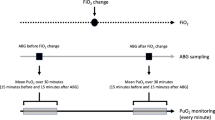Abstract
Urine dissolved oxygen (DO) was measured in 40 healthy subjects and 115 patients divided into 4 groups according to their disease. Group 1 (20 patients) had lower urinary tract infection (UI), Group 2 (30 patients) had urinary stone disease (USD), Group 3 consisted of 50 end-stage chronic renal failure patients (CRF) and 15 patients in Group 4 were affected by influenza viral infection (IVI).
Urinary and arterial PO2, PCO2 and pH were also measured in 20 healthy subjects. The other 20 healthy volunteers were subjected to submaximal exercise and afterwards urinary DO was estimated.
Results revealed that in healthy subjects urinary DO or PO2 is not correlated with urinary pH or arterial pH, PO2 and PCO2. Also, urinary DO did not significantly vary on consecutive days. Urinary DO reflects mainly the renal metabolic state, being increased in conditions of decreased kidney metabolism such as CRF. Submaximal physical exercise, fever or urinary tract infection may significantly reduce urinary DO, whereas DO remains unaffected in uncomplicated USD. Human urinary DO is related to serum creatinine and urine volume. Our results indicate that urinary DO may be a useful indicator in clinical practice.
Similar content being viewed by others
References
Sarre, H.: Untersuchungen über die Sauerstoff-und Kohlensäurespannung im Harn und ihre Beziehung zum Nierengewebe und zur Nierenfunktion.Pflüger's Arch. Physiol., 239, 377 (1938).
Reeves, R. B., Rennie, D. W., Papenheimer, J. R.: Oxygen tension of urine and its significance.Fed. Proc., 16, 693 (1957).
Aperia, A. C., Liebow, A. A.: Implications of urine PO2 for renal medullary blood flow.Amer. J. Physiol., 206, 499 (1964).
Chen Nan, N., Yin Pong, P., Feng Ming, L. I., Ju, P. Y.: Human urine gas measurement and its application in acute renal failure.Chinese J. Med., 99, 75 (1986).
Dubose, T. O.: Hydrogen ion secretion by collecting duct as a determinant of U-B PCO2 gradient in alkaline urine.J. Clin. Invest., 69, 145 (1982).
Hong, S. K.: Total and partial gas tensions of human bladder urine.J. Appl. Physiol., 15, 115 (1969).
Landes, R. R., Leonard, K. O., Duruman, N.: Clinical study of oxygen tension of the urine and renal structures.J. Urol., 92, 171 (1964).
Leonard, K. O., Landes, R. R.: Oxygen tension of urine and renal structures.N. Engl. J. Med., 269, 115 (1963).
Pitts, R.F.: Production of CO2 by the intact functioning kidney of the dog.Med. Clin. North. Amer., 59, 507 (1975).
Rennie, D. W., Reeves, R. B., Papenheimer, J. R.: Oxygen pressure in urine and its relation to intrarenal blood flow.Amer. J. Physiol., 195, 120 (1958).
Evangelou, A., Kalfakakou, V., Giotaki, E., Karkabounas, S., Kallistratos G.: Non-routine urine tests.Hellenic Urol. Rev., 25, 36 (1988).
Evangelou, A., Kalfakakou, V., Karkabounas, S., Giotaki, E., Donos, A., Kallistratos, G.: Urine oxygen content: Is it of any clinical significance (in Italian).Giorn. Ital. Patol. Clin., 6, 369 (1988).
Kalfakakou, V., Evangelou, A., Donos, A., Karkabounas, S., Kallistratos, G.: The clinical significance of urine oxygen content in health and disease. In: Reports on Urology, pp. 264–268 (1990).
Kalfakakou, V., Evangelou, A., Donos, A., Karkabounas, S., Liveris, K., Karabetsos, D., Kallistratos, G.: Urine biochemical oxygen demand (BOD): An approach to urine ecophysiology.Microb. Ecol. Health Dis., 4, 244 (1991).
Ankland, K., Krog, J.: Renal oxygen tension.Nature, 188, 671 (1990).
Leonhard, K. O., Landes, R. R.: Urinary oxygen pressure in renal and vascular disease.Clin. Sci., 194, 113 (1965).
Levy, M. N., Imperial, E. S.: Oxygen shunting in renal cortical and medullary capilaries.Amer. J. Physiol., 200, 159 (1961).
Author information
Authors and Affiliations
Rights and permissions
About this article
Cite this article
Giannakopoulos, X., Evangelou, A., Kalfakakou, V. et al. Human bladder urine oxygen content: Implications for urinary tract diseases. International Urology and Nephrology 29, 393–401 (1997). https://doi.org/10.1007/BF02551103
Accepted:
Issue Date:
DOI: https://doi.org/10.1007/BF02551103




